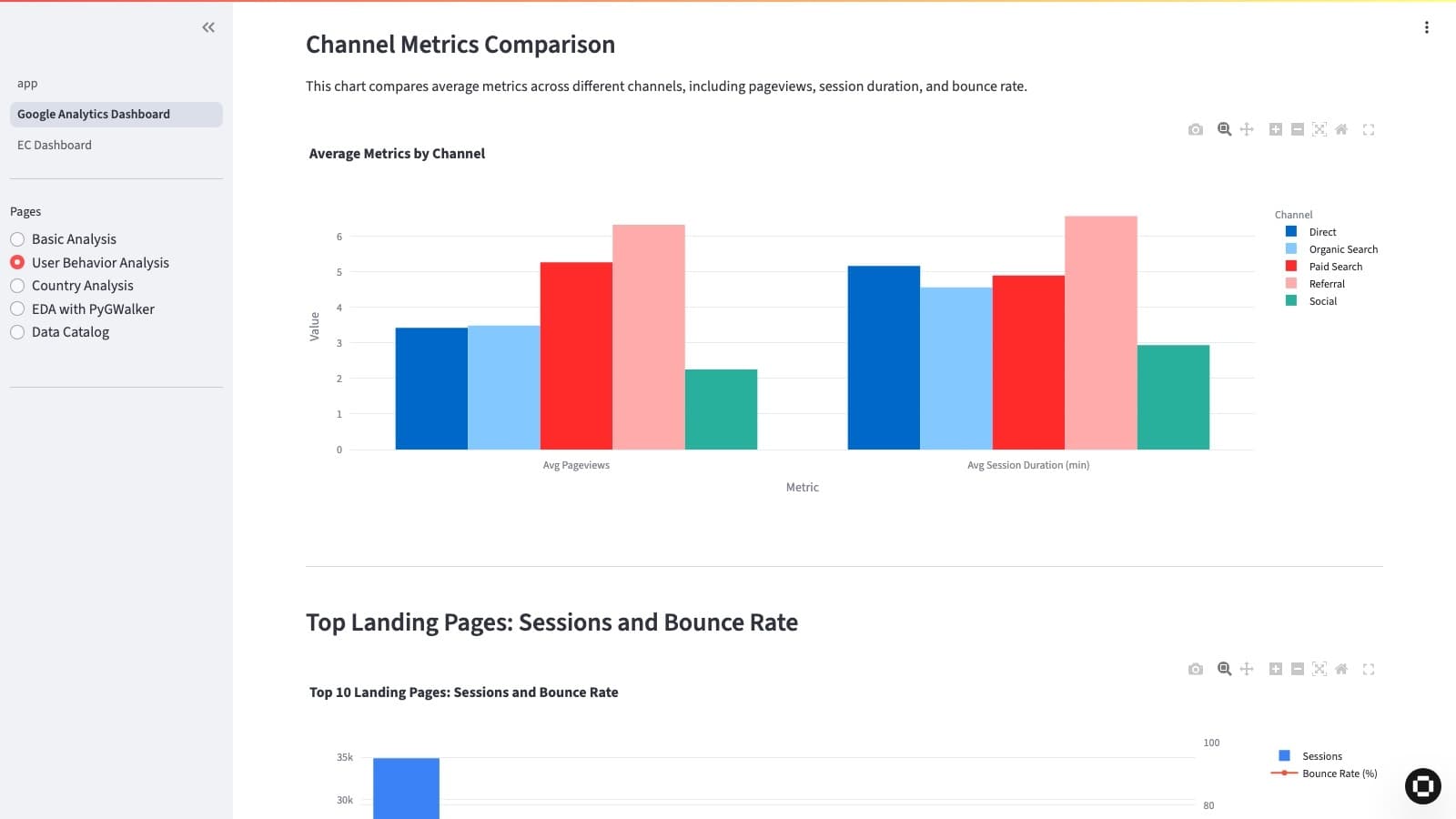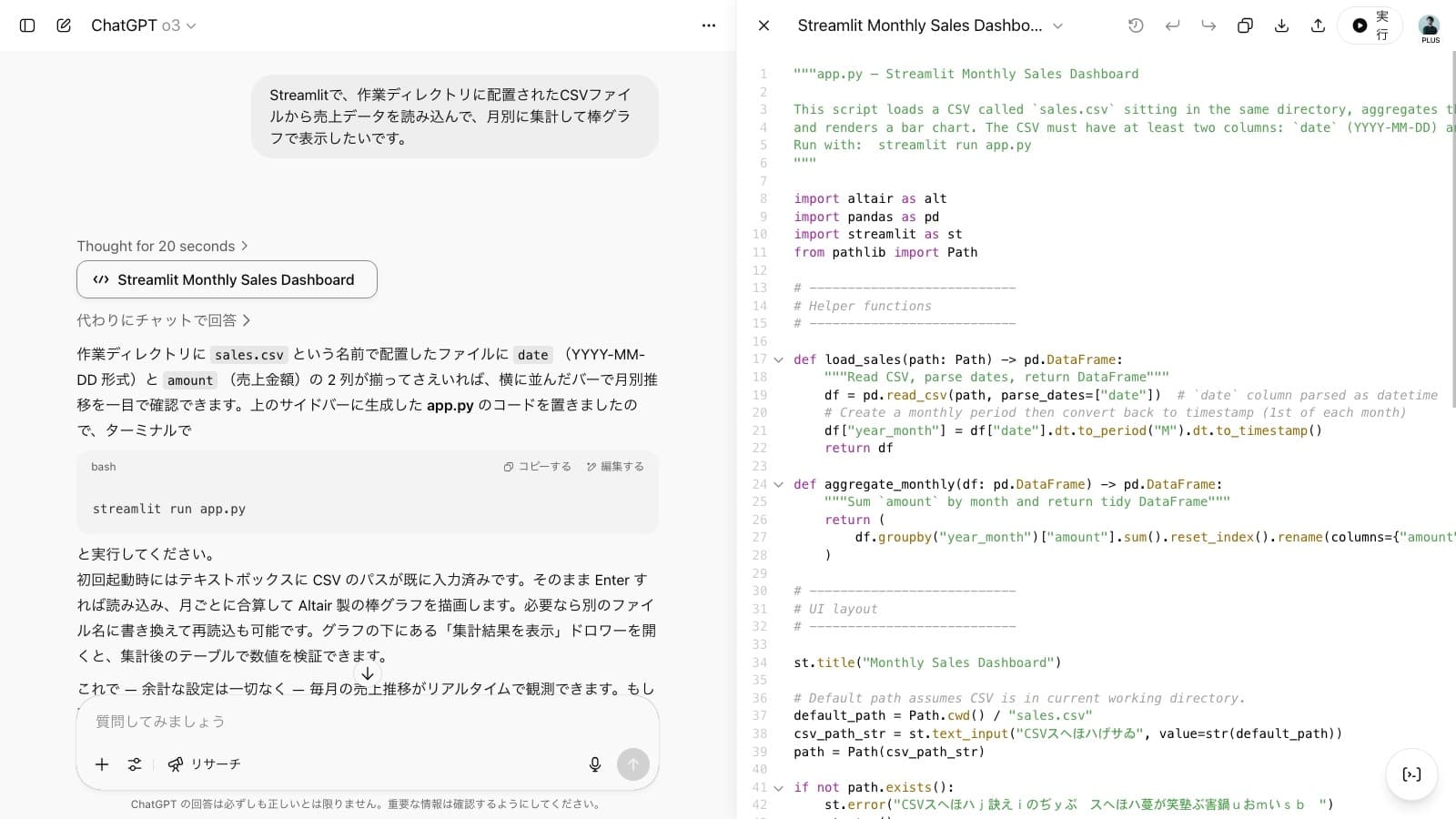Why Build BI Dashboards with Streamlit
The Transformation from Traditional BI Tools to Code-Based Approaches
This book is written by the development team at Squadbase. Squadbase is a platform for building and deploying code-driven internal tools. By combining rapid AI-assisted development with streamlined deployment, it helps companies turn data into productivity gains.
Throughout this book, we focus on "building BI dashboards with Streamlit."
Introduction
While BI (Business Intelligence) tools are crucial for data-driven decision-making, traditional platforms present limitations that many companies are now encountering. As a result, building BI dashboards with code, particularly using Streamlit, is gaining traction.
This chapter outlines the challenges of traditional BI tools and explains why Streamlit offers a compelling alternative.
Challenges of Traditional BI Tools
Limited Customization
Traditional BI tools restrict users to vendor-provided features, making it difficult to integrate custom logic or advanced AI models. Developing custom UI and features tailored to specific operational needs is a common challenge.
Data Source Limitations
BI tools often have constraints on the format and volume of data they can handle:
- Connectivity is typically limited to a handful of databases, preventing direct access to SaaS APIs.
- Performance degrades as data volume increases, leading to slow dashboard loading.
- Handling nested data structures like JSON or XML requires extensive data preprocessing.
High Learning Costs
Many BI tools have complex user interfaces that require significant training for non-engineers. Users must learn tool-specific methods, making knowledge transfer within teams difficult.
Difficulty in Making Changes
Modifying BI dashboards often requires specialized engineers, slowing down response times to changing business requirements and potentially leading to missed opportunities.
Poor Maintainability
Configuration and customization in many BI tools are done through a GUI, which complicates version control. Tracking changes or rolling back to a previous state can be difficult. Furthermore, inadequate support for multiple environments increases maintenance overhead.
High Operational Costs
BI tool license fees are often tied to the number of users and data capacity. The costs of hiring and training specialized personnel are also significant.
To address these issues, companies are increasingly adopting code-based approaches ("BI as Code"). Streamlit, in particular, is emerging as a popular framework for building BI dashboards due to its simplicity and flexibility.
Code-Based Solutions with Streamlit

What is Streamlit?
Streamlit is an open-source Python framework for building data applications. Its key feature is the ability to create interactive web applications with minimal code.
import streamlit as st
import pandas as pd
st.title("Sales Dashboard")
data = pd.read_csv("sales_data.csv")
st.line_chart(data)A functional dashboard can be created with just a few lines of code.
Key Benefits of Streamlit
1. Simple Learning Curve
Analysts with basic Python knowledge can start building dashboards quickly. Existing data analysis skills are directly transferable to dashboard development.
2. Flexibility and Customization
A code-based approach offers significant freedom:
- Extensive Customization: Build UIs that precisely match business requirements.
- Modern Technology Integration: Freely integrate AI models and cloud services.
- Custom Logic Implementation: Accurately model complex business rules.
3. Version Control and Collaboration
Using Git for code management provides several advantages:
- Complete Change History: All modifications are tracked with clear accountability.
- Efficient Team Development: Parallel work and merging using branches.
- Improved Quality Management: Quality assurance through code reviews.
Case Studies
| Use Case | Traditional Challenges | Solution with Streamlit |
|---|---|---|
| Manufacturing: Quality Control Dashboard |
|
|
| E-commerce: Sales Analysis Dashboard |
|
|
Streamlit in the AI Era
Synergy Between AI and Code
Recent advancements in AI have made code generation accessible even to non-engineers. The combination of Streamlit and AI has proven to be particularly effective.
1. Code Generation with GPT
Tools like ChatGPT and GitHub Copilot can generate application code from natural language prompts. The accuracy of AI-driven code generation has improved significantly. Streamlit's simple, single-file structure makes it an ideal target for this technology.

2. "No-Code with AI" Development
Using coding agents, developers can implement features by providing instructions in natural language. This workflow combines the speed of no-code development with the flexibility of a code-based approach.
- Interactive Development: Build applications by giving instructions like "add this feature" or "modify this part."
- Incremental Development: Start with small features and expand gradually.
- Error Resolution: Use AI to diagnose and solve errors.
3. Access to the Latest AI Models
A code-based approach allows immediate access to the latest AI technologies. As new models are released with improved coding capabilities, they can be integrated into development workflows without delay.
Practical AI Applications
Code-based BI dashboards can leverage AI for both development and operational functions.
1. Natural Language Querying
Instead of relying on pre-written SQL queries, users can ask questions in natural language. An AI model can then generate the appropriate SQL query to retrieve the data.
# Conceptual structure of a natural language data analysis app
import streamlit as st
from langchain import OpenAI
st.title("Natural Language Data Analysis")
query = st.text_input("Enter your question")
if query:
# AI generates SQL query
llm = OpenAI()
sql_query = llm(f"Convert question to SQL: {query}")
# Display results
result = execute_query(sql_query)
st.dataframe(result)2. Intelligent Report Generation
AI can automatically summarize analysis results and generate reports, allowing users to gain insights from data more quickly. This eliminates the need to pre-define report formats and rebuild dashboards for every change.
# AI-powered report generation
def generate_insights(data):
insights = ai_analyzer.analyze(data)
st.subheader("AI Analysis Results")
for insight in insights:
st.write(f"📊 {insight}")Streamlit vs. Self-Service BI: A Comparison
Cost
| Aspect | Self-Service BI | Streamlit |
|---|---|---|
| Initial Cost | High (license fees) | Free (open source) |
| Recurring Cost | Per-user subscriptions | Cloud infrastructure usage |
| Development Effort | Time-consuming setup | Fast development after initial learning |
| Training Cost | Tool-specific training required | Basic Python knowledge is sufficient |
Streamlit's Advantage: Significant cost savings, especially for small to medium-sized teams.
Operations
| Aspect | Self-Service BI | Streamlit |
|---|---|---|
| Version Control | GUI-based, difficult to track | Full version control with Git |
| Environment Management | Manual sync of dev/test/prod | Reproducible environments via code (IaC) |
| Team Collaboration | Limited concurrent editing | Parallel development with Git branches |
Flexibility
| Aspect | Self-Service BI | Streamlit |
|---|---|---|
| Customization | Limited to vendor features | Unlimited customization with Python |
| Data Sources | Restricted to supported connectors | Connect to any data source via APIs |
| Analysis | Dependent on built-in functions | Access to all Python data science libraries |
AI Integration
| Aspect | Self-Service BI | Streamlit |
|---|---|---|
| Integration | Limited to vendor-provided AI | Use any AI/ML library |
| Model Access | Delayed support for new models | Immediate access to the latest models |
| Development | Low compatibility with code-gen AI | High compatibility with code-gen AI |
Next Steps
To get started, you will need the following:
- Environment: A development environment like GitHub Codespaces.
- Python Basics: Familiarity with pandas DataFrames.
- Data: A clear idea of the data you want to visualize.
- AI Tools: Access to a code generation AI like ChatGPT.
The next chapter provides a step-by-step guide to setting up your environment.